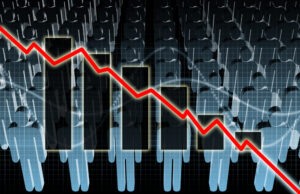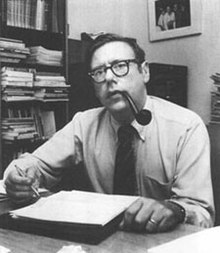
Arthur M. Okun
1928-1980

Arthur Okun is known mainly for Okun’s Law, which describes a linear relation between percentage-point changes in unemployment and percentage changes in gross national product. It states that for every percentage point that the unemployment rate falls, real GNP rises by 3 percent. Okun’s Law is based on data from the period between World War II and 1960, and he cautioned that the law is good only within the range of unemployment rates—3 to 7.5 percent—experienced in that time period.
Like many economic laws, Okun’s is an observation of an empirical (real-world) regularity that is not based on any strong economic reasoning. Nevertheless, it has held up well, within the appropriate range of unemployment rates, since Okun discovered it. Yale’s james tobin, who was Okun’s colleague both at Yale and on President John F. Kennedy’s Council of Economic Advisers (CEA), called Okun’s Law “one of the most reliable empirical regularities of macroeconomics.”
Okun discovered the law while he was a senior economist with Kennedy’s CEA. The CEA wanted to convince Kennedy that the economy-wide gains from lowering unemployment from 7 to 4 percent were greater than previously imagined. Okun’s Law was a major part of the empirical justification for Kennedy’s tax cuts. At the end of President Lyndon B. Johnson’s administration, Okun was chairman of the CEA.
Okun believed that wealth transfers by taxation from the relatively rich to the relatively poor are an appropriate policy for government. But he recognized the loss of efficiency inherent in the distribution process. In Equality and Efficiency, the Big Tradeoff Okun introduced the metaphor of the leaky bucket, which has become famous among economists: “The money must be carried from the rich to the poor in a leaky bucket. Some of it will simply disappear in transit, so the poor will not receive all the money that is taken from the rich” (p. 91). Okun attributed these losses to the administrative costs of taxing and transferring, and to incentive effects. The poor who are receiving welfare or other transfer payments have less incentive to work because their transfer payments are reduced as they make more money. The rich have less incentive to work because high marginal tax rates take a large fraction of their additional income (top tax rates were between 50 and 70 percent at the time he was writing). The relatively rich also have more of an incentive to spend on tax-deductible items and on tax shelters as a way of avoiding taxes. “High tax rates,” wrote Okun, “are followed by attempts of ingenious men to beat them as surely as snow is followed by little boys on sleds.” For these insights, Okun can be considered one of the original supply siders (see supply-side economics).
About the Author
David R. Henderson is the editor of The Concise Encyclopedia of Economics. He is also an emeritus professor of economics with the Naval Postgraduate School and a research fellow with the Hoover Institution at Stanford University. He earned his Ph.D. in economics at UCLA.
